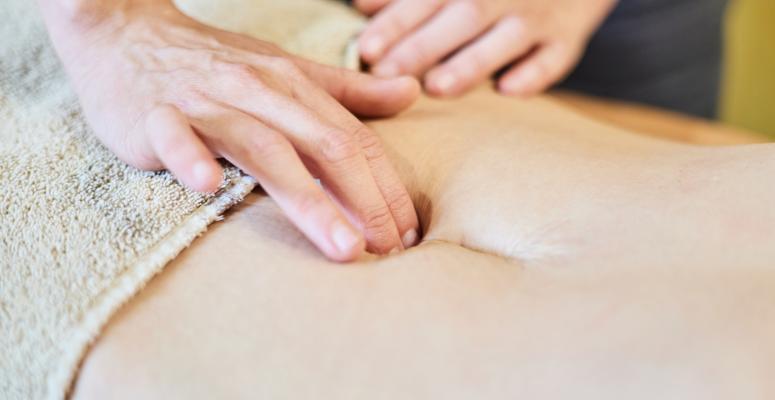
- What are some of the most common causes of pain in the pelvis after childbirth?
- What are some of the types of postpartum pelvic pain a person can have?
- What are some of the treatment options available for those who have postpartum pelvic pain?
- What types of exercises and treatments can a physical therapist use for postpartum pelvic pain?
- Alliance PTP is ready to help you find top-notch PT for your postpartum pelvic pain
Postpartum pelvic pain is a condition that affects women after they give birth. It’s characterized by pain that extends to several weeks following childbirth. The pain may be felt in several different regions of the pelvis.
It’s common for pregnant women to experience, but it’s also very common for women after they give birth. Postpartum pelvic pain can seriously affect quality of life, which is why it’s so important to address. To learn more about managing pain in the pelvis after giving birth, keep reading the information listed below.
What are some of the most common causes of pain in the pelvis after childbirth?
- Organ prolapse — Organ prolapse is a condition that involves an organ shifting from its natural position. It’s caused by a weak pelvic floor and has been known to cause pain.
- Bone separation — In some cases, childbirth can result in a condition where the bones in the pelvis separate to accommodate the child. This condition can cause significant pain.
- Tears — It’s common for women giving birth to experience tears if the baby’s head doesn’t fit through the vaginal canal. These tears can damage both the skin and the muscles in the vagina and cause pain.
- Muscle strain and weakness — The birthing process places a significant amount of strain on the pelvic floor muscles. During pregnancy and even after, the muscles can become strained, which eventually causes them to become weak. These muscular issues may cause pain for some women.
What are some of the types of postpartum pelvic pain a person can have?
- Spine pain.
- Girdle pain.
- Tailbone pain
- Pubic pain.
- Genital pain.
- Abdominal pain.
What are some of the treatment options available for those who have postpartum pelvic pain?
- Physical therapy — Physical therapy can help reduce pain levels in the pelvis. It’s not uncommon for licensed, experienced physical therapists to work with women who have recently given birth and are trying to manage their pelvic pain.
- Pain medication — Pain medication may help with postpartum pelvic pain, but it’s not an effective long-term solution. If you want lasting pain relief, you’d most likely benefit from physical therapy treatment that centers on women’s health.
What types of exercises and treatments can a physical therapist use for postpartum pelvic pain?
- Pelvic floor strengthening exercises — Pelvic floor strengthening exercises can be implemented to help build control of weak pelvic muscles. If you have postpartum pelvic pain, physical therapists will likely suggest strengthening exercises to improve muscle function, reduce tension and promote blood flow, which can help reduce your pain.
- Pelvic floor relaxation exercises — Tightening your pelvic floor muscles for improved control is important. But it’s also important to know how to relax your pelvic muscles. During pelvic floor relaxation exercises, you can expect to learn how to contract and relax your muscles for better control. Being able to contract and relax your pelvic muscles can help encourage circulation to the pelvis, which may help with your pain and improve pelvic health.
- Core strength building exercises — Core strengthening exercises are another important part of treatment for postpartum pelvic pain. The functionality of the pelvis is closely related to the strength of the core muscles, which is why building core strength can help. Building your abdominal strength can help improve your levels of pain and the functionality of your pelvis overall.
- Biofeedback — Biofeedback is a type of treatment that involves the use of sensors to monitor movements that involve the use of the pelvis. It can serve as a visual aid for patients who struggle with activating and controlling the right muscles in their pelvis. This method may not be preferred by everyone, however, because it’s considered invasive by some. Despite this, biofeedback can be an effective treatment option for those who struggle to control their pelvic muscles after giving birth.
Alliance PTP is ready to help you find top-notch PT for your postpartum pelvic pain
At Alliance Physical Therapy Partners, we’re proudly bringing together physical therapy practices across the country to help people get the high-quality PT they need.
Want to see a physical therapist in person? We can put you in touch with an Alliance PTP partner that’s close to you and that can help you address postpartum pelvic pain. After having a child, life can get pretty hectic. But that shouldn’t stop you from receiving the care you need to address your postpartum pelvic pain. If you’re experiencing pain in your pelvis after giving birth, you’re likely to see positive results after getting assistance from a physical therapist.
Not keen on in-person PT sessions or not close to an Alliance PTP partner? No worries. We also offer effective and affordable virtual physical therapy through our Agile Virtual Physical Therapy platform.
Come find help for your injury or chronic condition today!
Get Help at a Location Near You
